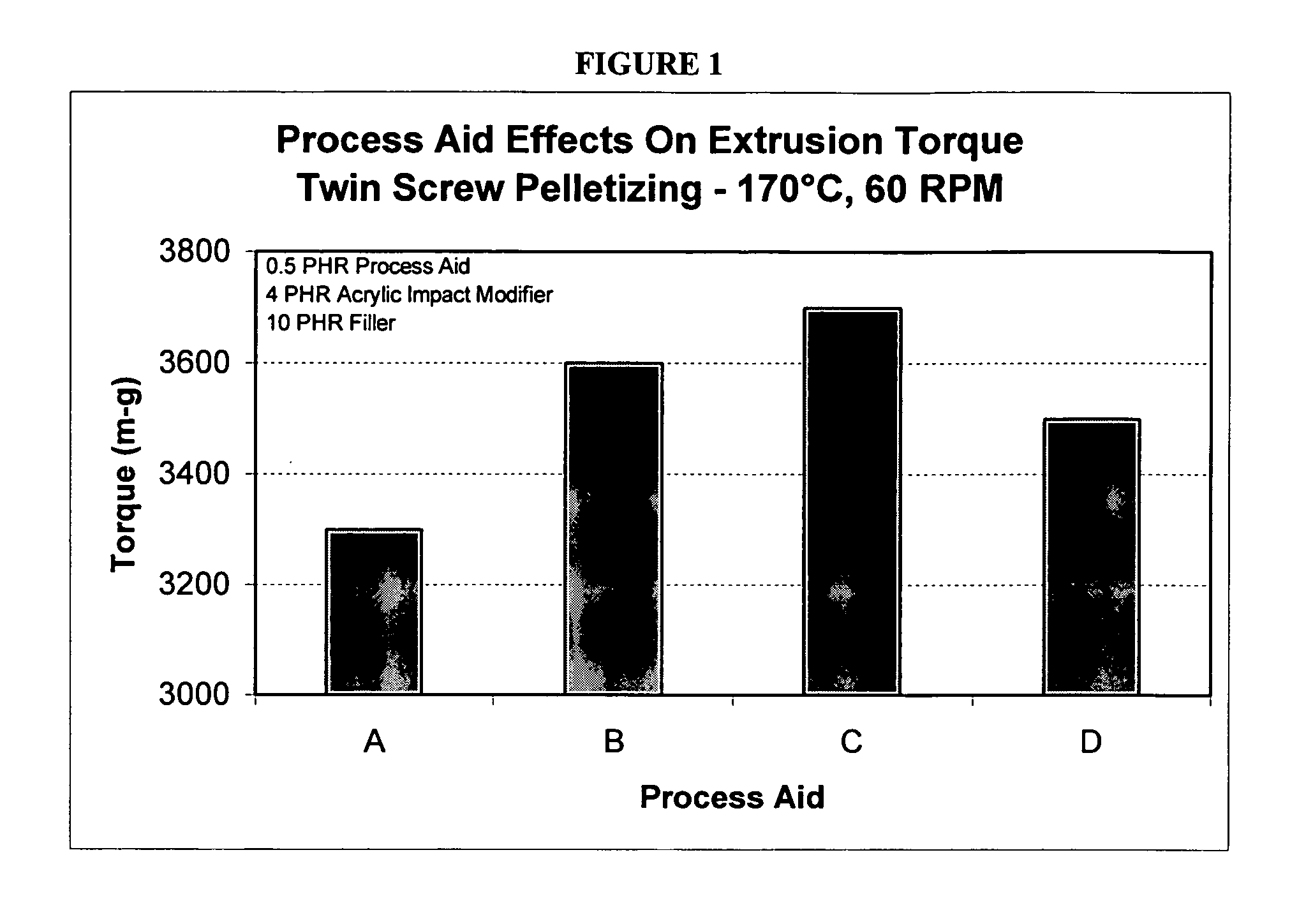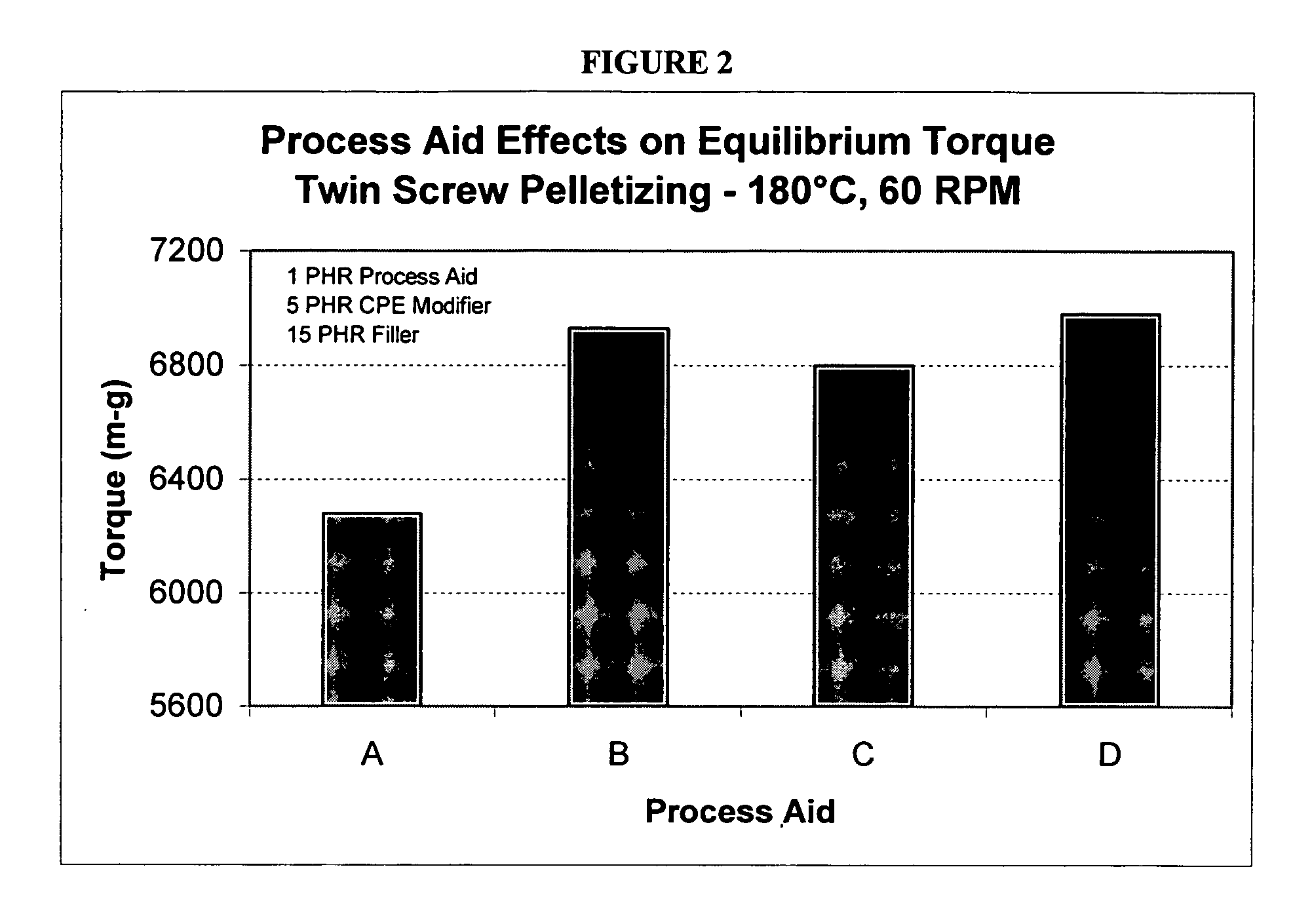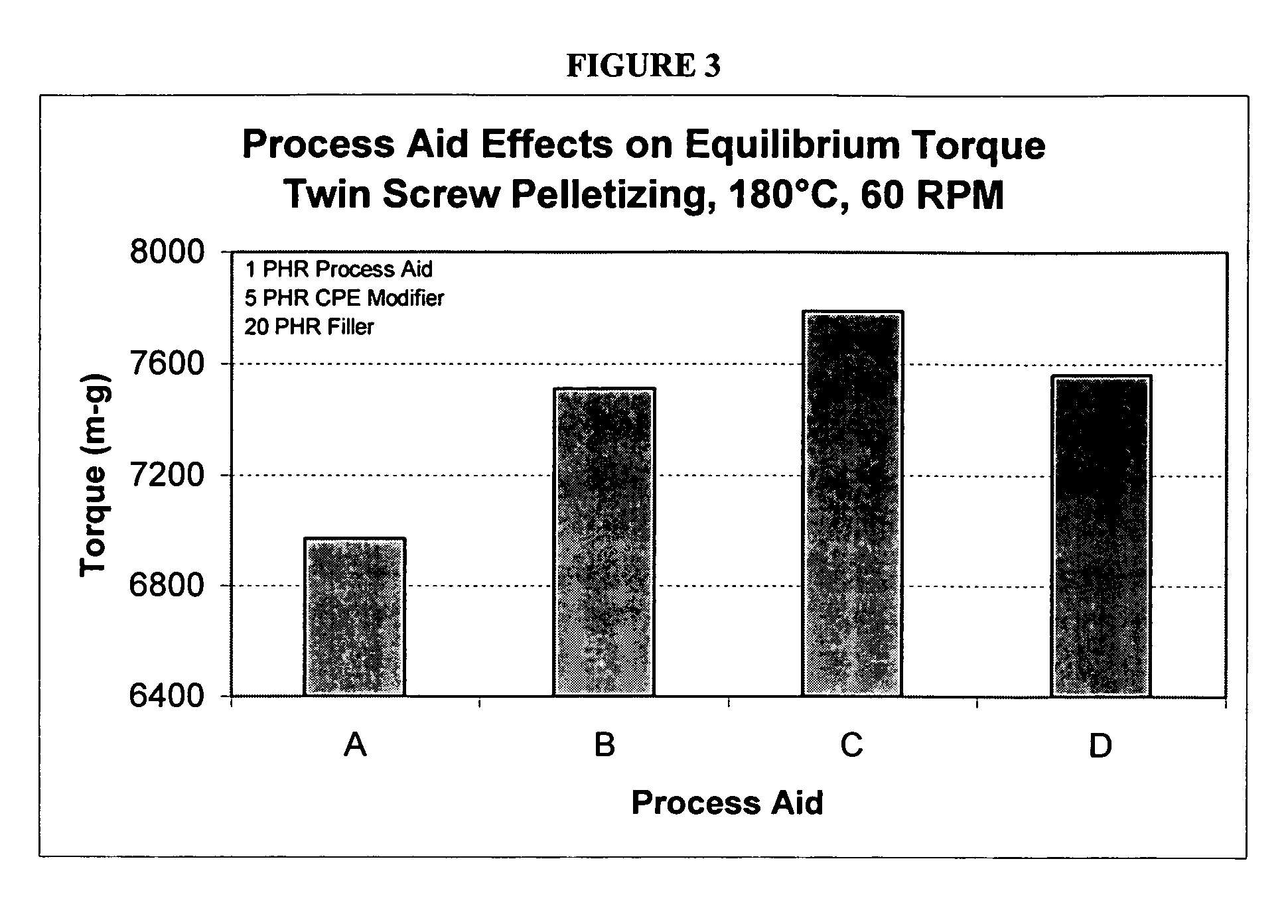Reduced melt viscosity rigid polyvinylchloride (PVC) composition
a polyvinyl chloride and composition technology, applied in the field of rigid, unplasticized thermoplastic composition process aids, can solve the problems of increasing melt torque and deteriorating physical properties of extruded articles, and achieve the effect of reducing the melt process torque of rigid thermoplastics
- Summary
- Abstract
- Description
- Claims
- Application Information
AI Technical Summary
Benefits of technology
Problems solved by technology
Method used
Image
Examples
example 1
Acrylic Impact Modified PVC
[0038] The ingredients in Table 1 were blended in a high intensity mixer using the procedure outlined in Table 2. All formulations herein are listed in parts per hundred resin (phr). Acrylic process aids include the process aid “A” of the invention, and comparative acrylic process aids “B”, “C” and “D”, the compositions shown in Table A below: (MMA=methyl methacrylate, BA=butyl acrylate, ST=styrene, EA=ethyl acrylate)
TABLE AMonomer Weight Percent (%)MMABASTEARelative ViscosityA4223350.18B (comp)38-3953-583-60-10.05-0.20C (comp)80200.70-1.0 D (comp)4024330.04-0.07
[0039] After blending, the materials were allowed to equilibrate for a minimum of 24 hours and then analyzed using a torque rheometer for properties typical of a PVC formulation. Methods employed for torque rheometry are similar to those found in ASTM D2538. The data are shown in Table 3 and correspond to run conditions of 190° C, 75 rpm. To simulate extrusion appearance, color chips were pulled...
example 2
Chlorinated Polyethylene Impact Modified PVC Pelletized
[0046] The ingredients in Table 5 were blended in a high intensity mixer using the procedure outlined in Table 6. The subject of the invention is labeled as Formulation A, while Formulations B-D are comparative materials, with Formulations B and D containing lubricating process aids. After blending, the materials were allowed to equilibrate for a minimum of 24 hours and then analyzed using a torque rheometer for properties typical of a PVC formulation. Methods employed for torque rheometry are similar to those found in ASTM D2538. The data is shown in Table 7. To simulate extrusion appearance, color chips were pulled from the torque rheometer at times between 2 and 20 minutes. Color comparisons were made using the 6 minute chip, as this was shown to be most representative of a commercially extruded compound. These results are also shown in Table 7. Fusion data was obtained at 180° C., 60 rpm; color data was obtained at 190° C.,...
example 3
High Filler, Chlorinated Polyethylene Impact Modified PVC, Pelletized
[0050] The ingredients in Table 9 were blended in a high intensity mixer using the procedure outlined in Table 10. The subject of the invention is labeled as Formulation A, while Formulations B-D are comparative materials, with Formulations B and D containing lubricating process aids. After blending, the materials were allowed to equilibrate for a minimum of 24 hours and then analyzed using a torque rheometer for properties typical of a PVC formulation. Methods employed for torque rheometry are similar to those found in ASTM D2538. The data is shown in Table 11. To simulate extrusion appearance, color chips were pulled from the torque rheometer at times between 2 and 20 minutes. Color comparisons were made using the 6 minute chip, as this was shown to be most representative of a commercially extruded compound. These results are also shown in Table 11. Fusion data was obtained at 180° C., 60 rpm; color data was obt...
PUM
| Property | Measurement | Unit |
|---|---|---|
| Percent by mass | aaaaa | aaaaa |
| Percent by mass | aaaaa | aaaaa |
| Percent by mass | aaaaa | aaaaa |
Abstract
Description
Claims
Application Information
 Login to View More
Login to View More - R&D
- Intellectual Property
- Life Sciences
- Materials
- Tech Scout
- Unparalleled Data Quality
- Higher Quality Content
- 60% Fewer Hallucinations
Browse by: Latest US Patents, China's latest patents, Technical Efficacy Thesaurus, Application Domain, Technology Topic, Popular Technical Reports.
© 2025 PatSnap. All rights reserved.Legal|Privacy policy|Modern Slavery Act Transparency Statement|Sitemap|About US| Contact US: help@patsnap.com



